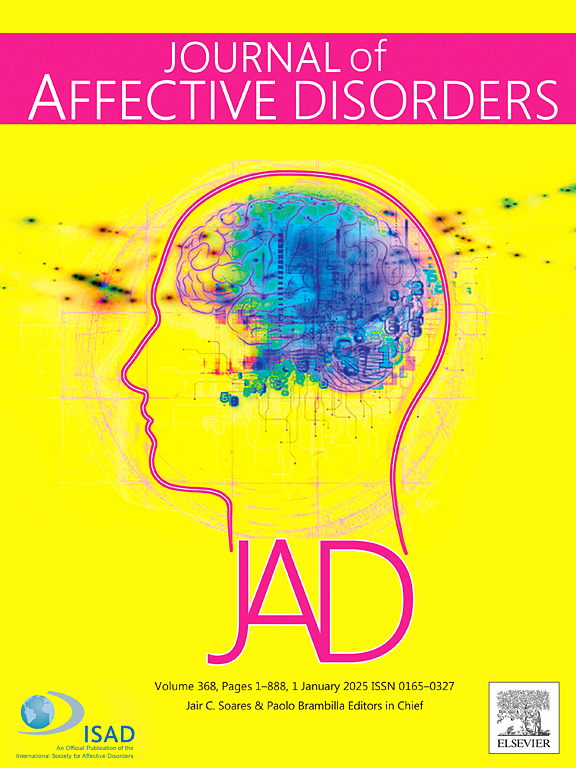The role of PTSD-depression comorbidity in long-term mental health sequalae of the October 7th terror attack in Israel: A nationwide prospective study
IF 4.9
2区 医学
Q1 CLINICAL NEUROLOGY
引用次数: 0
Abstract
Introduction
The October 7, 2023, attack engendered extensive mental pain and can be considered a mass trauma that affected most Israeli citizens. This study investigates the long-term psychological impact of probable posttraumatic stress disorder and major depressive disorder (PTSD-MDD) one month after October 7th, on anxiety, depression, PTSD, and complex PTSD (CPTSD) symptoms as well as on suicidal ideation, and life satisfaction one-year post-attack among Israeli civilians.
Methods
Using a nationally representative cohort of 600 participants (302 women, 50.3 %) aged 18–85 (Mage = 41.02, SD = 13.79), data were collected two months pre-attack (T1), one-month post-attack (T2), and one-year post-attack (T3). Using validated self-report measures, probable diagnostic groups at T2 (no diagnosis, PTSD alone, depression alone, and probable PTSD-MDD comorbidity) were examined as predictors of mental health outcomes at T3, including anxiety, depression, PTSS, CPTSD, suicidal ideation, and life satisfaction. Baseline symptom levels (T1) as well as demographics and trauma-related variables were controlled during the analyses.
Results
Probable PTSD-MDD at T2 significantly predicted severe psychological outcomes at T3, including anxiety, depression, PTSS, and suicidal ideation. Life satisfaction was lowest among probable PTSD-MDD participants and highest in those without diagnoses. Notably, probable PTSD-MDD demonstrated greater stability over time compared to single diagnoses, underscoring their persistence. Changes in probable diagnostic categories between T2 and T3 highlighted the dynamic yet challenging recovery trajectories particularly for comorbid conditions.
Discussion
The findings underscore the amplifying effect of probable PTSD-MDD comorbidity on psychological distress and reduced life satisfaction. These results underscore the need for integrative, trauma-informed interventions targeting comorbid populations to optimize recovery pathways.
求助全文
约1分钟内获得全文
求助全文
来源期刊

Journal of affective disorders
医学-精神病学
CiteScore
10.90
自引率
6.10%
发文量
1319
审稿时长
9.3 weeks
期刊介绍:
The Journal of Affective Disorders publishes papers concerned with affective disorders in the widest sense: depression, mania, mood spectrum, emotions and personality, anxiety and stress. It is interdisciplinary and aims to bring together different approaches for a diverse readership. Top quality papers will be accepted dealing with any aspect of affective disorders, including neuroimaging, cognitive neurosciences, genetics, molecular biology, experimental and clinical neurosciences, pharmacology, neuroimmunoendocrinology, intervention and treatment trials.
 求助内容:
求助内容: 应助结果提醒方式:
应助结果提醒方式:


